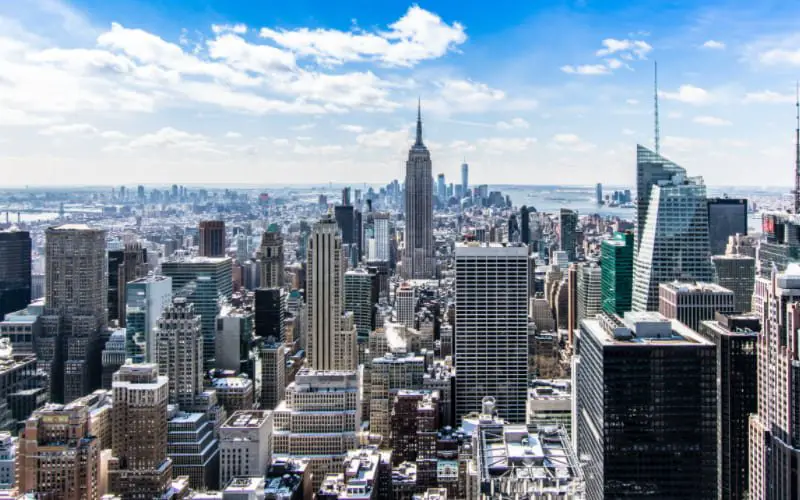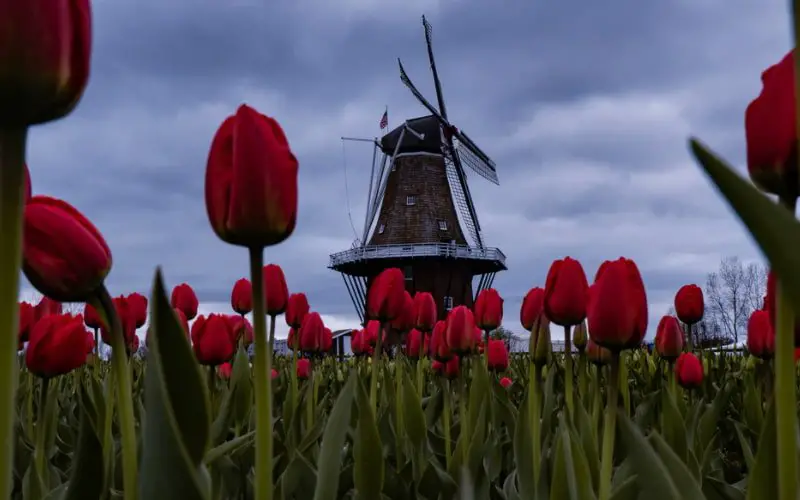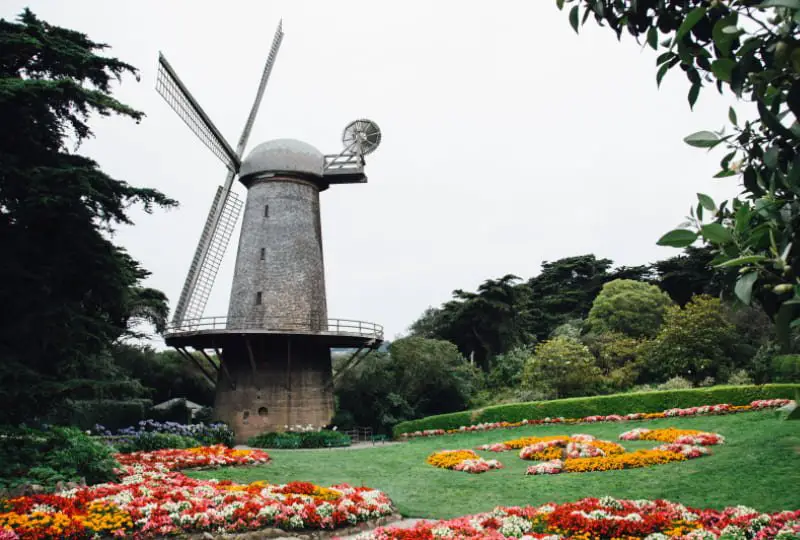

You can see influences from various countries in towns across the whole world, and especially throughout America since it is such a melting pot of so many different cultures. You can see these influences in the languages spoken in a region, the architecture, and the local cuisine. The USA is full of nods to various countries all over the globe, but you might be wondering, are there Dutch towns in American which get influenced by the Dutch?
There is a fair amount of Dutch influence throughout various cities and towns in America. You can primarily see the Dutch culture in states such as New York, New Jersey, Michigan, Ohio, Wisconsin, and Iowa. These towns have an apparent Dutch-inspired culture that is alive and well.
How and why exactly did this influence come about? Are there only a few towns throughout America that have had enough influence from the Netherlands to have Dutch names or is there a high amount of influence there? Today, we are going to discuss in-depth the influence that the Netherlands has had on America.
Throughout the USA, there are multitudes of towns that have Dutch-influenced names. These towns are all over the country, even in places you might not fully expect. Many of these towns with a prominent Dutch population even have yearly celebrations and festivals to honor the Dutch culture, which we will go into more later. Let’s go ahead and take a look at some of the towns throughout America that have Dutch names.
Towns in America which have a Dutch name:
As you can plainly see, there are many towns across the USA that have names that are influenced by Dutch civilians that have migrated here. This is just a small portion of the extensive list of American towns that have Dutch names, too.
If you were to look at these names on a map, you would see that they are all massively spread out among the USA. America truly is a melting pot of different cultures, and the sheer amount of Dutch influence within it proves that point even further.
Windmill Island Gardens in Holland, Michigan:

The USA and the Netherlands have a very lengthy and prominent history with one another. The Dutch began to settle in the USA in the 1600s, and they started in what we now know as New York.
Henry Hudson was intending to navigate the fleet of Dutch through to the Pacific and Asia but instead discovered what is now known as the Hudson River in New York. When the realization came that the Hudson did not lead to the Pacific, everyone on board decided to settle in New York instead.
New York City even used to be called New Amsterdam! The Dutch colonization expanded into the regions of New York that now go by the names Brooklyn, the Bronx, and Long Island. The name was changed to New York City after an exchange via a treaty.
The states we now know as Connecticut and Massachusetts were the next to be colonized, in the areas that correspond to Hartford and Cambridge. As time went on, more and more individuals from the Netherlands started making their way to various parts of America to settle and begin a new life.
It is even said that the American Declaration of Independence is greatly influenced by the Act of Abjuration from the Netherlands.
Why exactly did so people from the Netherlands start migrating to America?
There are a few answers to this question. A major reason that the Dutch started making their way to the USA was in avoidance of religious persecution as well as for the prospect of obtaining land to farm on. It is an unfortunate fact that religious persecution was a part of the reason why the Dutch citizens had to flee their home country.
Over the course of the next few hundred years, people from the Netherlands made their way to the USA, and mainly throughout the Midwest portion of the country. The Midwest is known for its rich soil and ability to grow a high quantity and quality of produce and other sustenance. There are still high amounts of citizens throughout the USA with Dutch ancestry, especially in midwestern states.
When people from the Netherlands began migrating to America, the main items that they brought along included fur for trading, potatoes, cabbage, and fish. The fur proved to be a popular commodity and was very successful when it came to trading with Native Americans in the original settlements in New York City.
The trading of fur helped sustain the Dutch settlers for many years, and it allowed them to migrate to new areas within the USA.
While Dutch communities are existent all throughout America, there are of course regions that have a much higher concentration than others.
The highest populations of citizens with Dutch ancestry are in Michigan, Ohio, Wisconsin, New York, Iowa, Colorado, Illinois, and Minnesota. The commonality among a lot of these states is that they happen to have rich soil and conditions for growing a wide variety of different food items.
These states are primarily the original states that the original Dutch citizens settled in once coming here, so you can definitely sense the culture throughout these towns.
Since the Netherlands and America go way back in their involvement with one another, several occasions celebrate the Dutch culture throughout these prominent Dutch communities and towns in the USA.
Dutch windmill surrounded by flowers in the USA:

Unsurprisingly, since the Netherlands is the tulip capital of the world, many of the celebrations around America include the vibrant flower. Some of the festivals you will find throughout America include:
Tulip Time Festival:
The Tulip Time Festival is held in Holland, Michigan, and has happened every year in the month of May since 1929. This historic festival consists of parades, fireworks, delicious food, and a Dutch market. The streets are lined with bountiful and bright tulips. It is truly a marvelous time if you are able to attend.
Pella Tulip Time:
Pella Tulip Time is a celebration held in Pella, Iowa on the first weekend of May each year. This festival has been happening since 1935. There are of course tulips all around this quaint town, as well as parades and incredible specialty Dutch food and treats.
You are guaranteed to see folks all over adorned in classic Dutch attire. Make sure to go and see the largest functioning windmill in the USA if you end up in Pella!
Tulip Festival:
There are multiple tulip festivals all throughout the US, but the one mentioned here takes place in Orange City, Iowa. Orange is the national color of the Netherlands, so the name of this city in Iowa is a nod to that aspect of Dutch culture.
This festival began in 1939 and occurs each year during the third weekend of May. Like the other tulip festivals, this one involves parades, music, Dutch cuisine, and of course, tulips.
Holland Fest:
The Holland Fest takes place in Cedar Grove, Wisconsin in the month of July. This festival has taken place since 1947, so it is certainly a long-running tradition. It is a blast for the whole family, consisting of games, food, music, delftware, street sweeping, and Dutch costumes. Everyone in this town is considered not only Dutch but family as well, during the Holland Fest in Cedar Grove.
Dutch Winterfest:
The Dutch Winterfest is an amazing festival held each November and December in Holland, Michigan to celebrate the holiday season. Dutch Winterfest acknowledges the arrival of Sinterklaas, who is correlated to what Americans know as Santa Claus.
The town is adorned in twinkling Christmas lights, reindeer are brought in to wow the children, and carolers can be found singing throughout the town. It is definitely a winter wonderland in Holland.
I hope to have answered the question on whether or not there are Dutch towns in America and if there have been Dutch influence on towns throughout America.
We have concluded that the Netherlands has had an astronomical impact on different areas in the USA as a result of Dutch migrations that began occurring as early as the 1600s. These various towns are friendly places with a deep love for their Dutch heritage.
Dutch culture is celebrated and is thriving all throughout America. You now have an understanding of how much of America has been influenced by the Netherlands and the towns and communities within it.
It is incredible that so much Dutch culture has stood the test of time and is still apparent after hundreds of years in the USA. This is also reflected in the many Dutch names used in the US, even by well-known Americans.